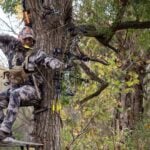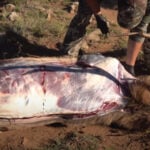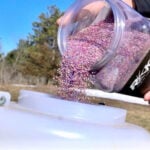Over the past few years, crossbows have been developed to be shorter and narrower, and can shoot faster and harder than ever before. As a result, many crossbow hunters are wondering if they can extend their effective ranges, due to the changing technology.
Take a look at this video to understand the most practical and ethical ranges for crossbow shots…
What Is The Practical Range For An Ethical Crossbow Shot?
Traditionally, 50 yards has been accepted to be the maximum ethical distance for a crossbow shot on a whitetail. However, many people consider the modern day crossbow to be capable of shooting at deer 70, 80, and even 90+ yards. Despite the advancements in technology, those are not ethical distances to shoot at a live animal.
When it comes to hunting, there are many variables. And when your target animal is farther out, those variables are increased. From the sound of a shot going off, to the wind speed and direction, let’s take a look at everything that can go wrong with a longer shot.
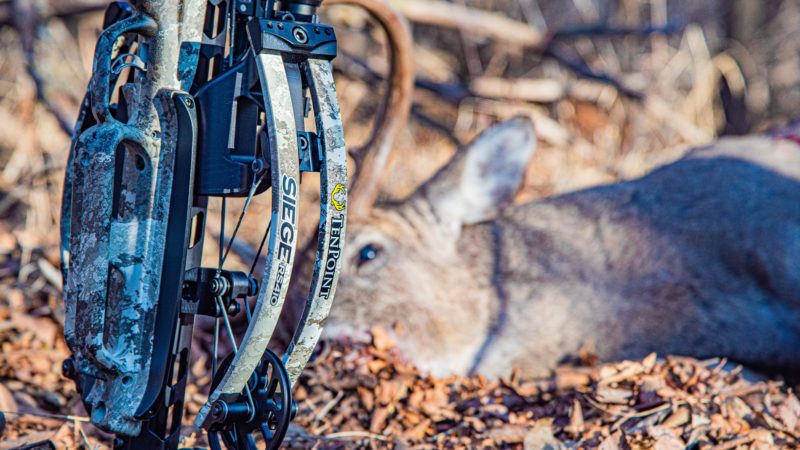
Potential Obstructions
The further away from an animal you are, the less likely you are to see any obstructions. This could potentially end up as a bad hit, wounded animal, or a failed recovery. Even with the amount of momentum and kinetic energy behind a crossbows arrow, once you’re getting out to farther distances, the speed and power are dramatically decreased.
An arrow can easily be diverted from its intended flight path by even the slightest glance off an object. Making sure you have a clear path between you and the intended target is essential when taking aim.
Loss Of Speed, Energy, And Elevation
Even though most crossbows are shooting in excess of 400 feet per second, with some shooting up to 470, most arrows will lose speed, energy, and elevation past 50 yards. For example, a 400 grain arrow that travels at 400 feet per second from a crossbow, will drop almost 93 inches at 100 yards.
This means that you not only need a clear shooting lane in front of the animal, but you also need to have a clear lane up to 7 feet above, in order to accommodate the height of the arrows trajectory. Not only does the arrow have to travel higher when shooting past 50 yards, but the angle of entry will be significantly changed. This means that the orientation of the wound channel will be at more of a decline, causing you to potentially miss vital organs.
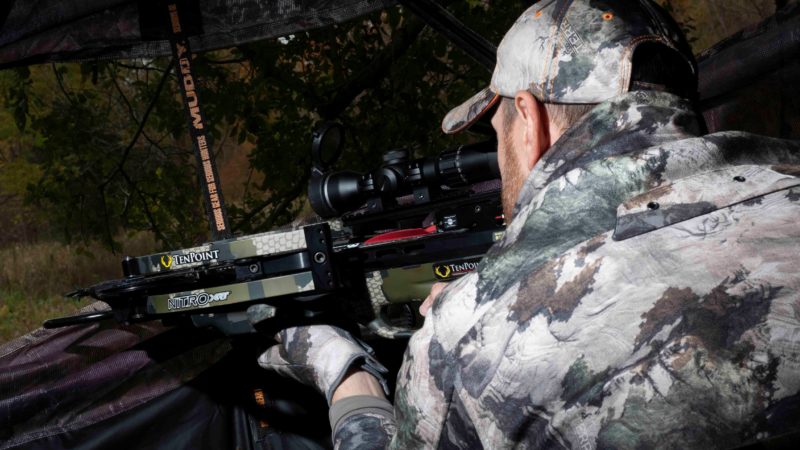
Decrease In Kinetic Energy
Most crossbow manufacturers advertise their speeds as “up to speeds”. Meaning that with a certain arrow, the crossbow can shoot “up to” that speed. Generally, crossbow hunters are using arrows that are a little heavier than the ones used in speed tests. This means that the arrow will be travelling slower and with less kinetic energy past 50 yards.
Some arrows can lose up to 15% of their speed, and up to 25% of their kinetic energy levels by the time they’ve reached 50 yards. So even though crossbows are shooting at speeds like they’ve never done before, if you’re extending your distance past 50 yards, there is less speed and kinetic energy than you realize. This can lead to poor penetration and a shallow wound channel.
Wind Drift
Like any other projectile, a crossbow arrow can be pushed off course by the wind. It might only be a couple inches at 50 yards, but at up to 100 yards, the arrow can be pushed several inches in any direction. This could cause you to miss the vitals, or the animal altogether.
Another thing to consider with wind drift, is that even if you only feel a slight breeze where you’re at, the wind may be blowing much harder further downfield. Many hunters don’t consider this because of how fast a crossbow shoots, but it could be a big issue in the wrong conditions.
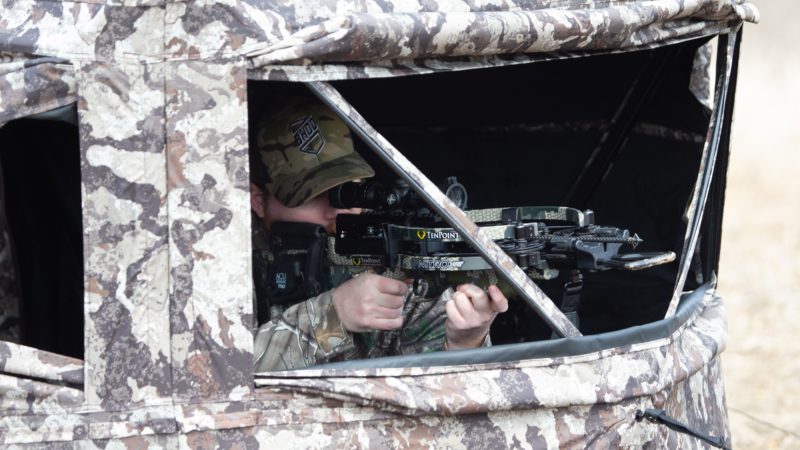
Jumping The String
Something that most compound and traditional hunters should always take into account, is the fact that the animal may “jump” the string. When shooting at 20 or 30 yards with today’s crossbow, you likely won’t have any issues. But even with the fastest crossbow, an animal can jump the string at longer distances due to the loss of speed and loudness of a crossbow.
For example, if you were to shoot at an animal that’s 100 yards away, it’ll take 0.27 seconds for the sound of the shot to reach the animal. If your crossbow is shooting 450 feet per second, it’ll take 0.67 for the arrow to reach that distance. With almost half a second between shot and hit, that is ample time for an animal to move in any direction, prior to the arrival of the arrow.
Conclusion
As a hunter, it’s your ethical responsibility to take the shot that will yield the greatest chance of harvest and recovery. So remember, the closer you take your shots, the less chance that one of these variables will affect you.
Hunting is always a game of probability, and we owe it to the animal, and ourselves, to give the highest probability of a quick and clean harvest.

